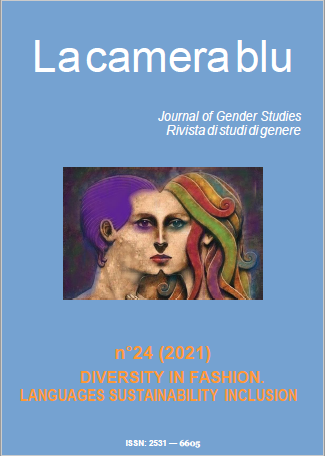Otherwise white. The wedding dress in the (de) construction of genres
DOI:
https://doi.org/10.6093/1827-9198/8898Keywords:
bridal gown, women photographers, gendered representationsAbstract
The essay briefly recollects the history of the wedding gown, underlining his quick spread and showing the layers of meaning that have turned it into an icon of heteronormative femininity. It then goes on to present three women artist who have worked to deconstruct stereotypes intertwined with the white wedding dress and to its resemantization.
Marcella Campagnano and Tomaso Binga are part of the lively cultural and artistic scene of the Italian feminist movement of the seventies. Campagnano, in a process of collective photographic creation, questions the uniqueness of the representation of the bride, reducing it to one of the multiple roles attributed by patriarchy to women. Instead Binga, with a picture where she is both the groom and the bride, reveals the artificiality of gender roles and the possibility to switch from one to the other; anticipating, in a way, deeper reflections on the performativity of gender that were still to come. Eventually, Pippa Bacca, thirty years later, in a deeply changed context, takes on the white wedding gown as a positive symbol. To her it represents a link between people and communities and the ideas of life itself and peace.
Downloads
Downloads
Published
How to Cite
Issue
Section
License
La camera blu is an open access, online publication, with licence CCPL Creative Commons Attribution 3.0 Unported


